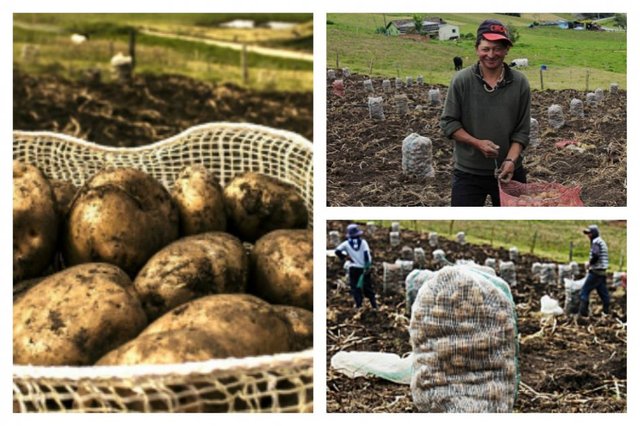Potatoes: nutritional and medicinal properties.
The potato is a nutritious vegetable that contains mineral salts, high-grade proteins and carbohydrates. Useful root vegetables are universally used in food and widely used in folk medicine.

Source
Today, there are four thousand varieties of potatoes that differ in early maturity, resistance to disease and extreme temperatures, as well as in yield and starch content.
Properties
The beneficial properties of potatoes, confirmed by modern medicine, allow us to consider this vegetable not only as a high-grade food product, but also as a highly effective therapeutic agent that successfully copes with many diseases.

Source
The dishes of a nutritious vegetable are indicated for gastritis, gastrointestinal diseases, arthritis, cardiovascular diseases, as well as a predisposition to various types of neuritis.
The healing properties of potatoes were noted by our ancestors. In folk medicine, raw vegetable pulp was used for burns and eczema, fungal infections, dermatitis, and even erysipelas, for which a gauze bandage was impregnated with potato juice and applied to an inflamed area.
Potatoes contain iron, phosphorous, calcium, magnesium, and zinc to help grow and strengthen bones. At the same time, it is important that the balance of phosphorus and calcium is maintained in the body, since an excess of phosphorus and a lack of calcium can lead to increased bone fragility and, as a consequence, osteoporosis.
Vitamin C, in which potatoes are so rich, is a powerful antioxidant that participates in the neutralization of free radicals in the human body and therefore helps prevent the destruction of cells and connective tissues. It contributes to the production of collagen and helps the iron absorption process.
Along with vitamin B, as well as magnesium, potassium, phosphorous and zinc, vitamin C has a positive effect on the skin condition and relieves pain with minor burns.
A little history
Potatoes have been a staple food for the Andes since ancient times. Local Indians chuno made her more than 2000 years ago. To do this, the chopped tubers were left outdoors overnight and crushed to feet in the morning. Then released from a significant portion of the juice, the potatoes were dried in the sun. By repeating this process several times, we got dry potatoes suitable for long-term storage, kind of like modern potato chips.

Source
In 1616, potatoes as a rare and refined dish were only served at the royal table in Paris. The tasty tubers of flour were first called truffles. And during the time of Marie Antoinette, her flowers were used to decorate hairstyles and dresses.
But the potatoes took root in peasant farms with great difficulty. And the big role in its popularization was played by pharmacist Antoine Parmantier, who especially filmed the night watchmen and rejoiced when his potato plantation was stolen. For this, grateful descendants erected a monument to him in the city of Mondidier.
At first, the potato was called "damn apple" and eating was considered a great sin. This view was compounded by poisoning with green tubers and ... fruits, which they unknowingly tried to eat as well. But over the years, prejudice has been overcome and it has become very popular.
Attention with solanine
I think it is not necessary to remember that only benign potatoes are suitable for nutrition and treatment. Fresh consumption of heavily sprouted and green tubers is not safe. All parts of the plant contain toxic glycoalkaloid solanine.
In green, rotten and sprouted tubers, there is much more solanine. A large amount of poisoning of domestic animals has been described, which was fed by the crude cleaning of highly germinated or green tubers. But if you undergo heat treatment, its toxicity disappears. With the use of the latter, poisoning of people is sometimes associated.

Source
In spring and summer, the content of solanine in the tubers increases, and therefore, when peeling old potatoes, the skin should be cut with a thick layer. When eating green potatoes, a bitter taste and perspiration appear in the throat, indicating the content of a significant amount of solanine.
Large doses, solanine destroys red blood cells and inhibits the central nervous system.
Solanine poisoning is primarily manifested by gastrointestinal and neurological disorders. Symptoms include nausea, diarrhea, vomiting, stomach cramps, heartburn, cardiac arrhythmia, headache, and dizziness. Hallucinations, loss of sensation, paralysis, fever, jaundice, dilated pupils, and hypothermia have been reported in more severe cases.
Reference:
https://www.sciencedirect.com/topics/chemistry/solanine
http://papapapitapapota.blogspot.com/2011/08/historia-de-la-papa.html
@tipu curate
Upvoted 👌 (Mana: 2/4 - need recharge?)